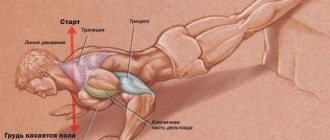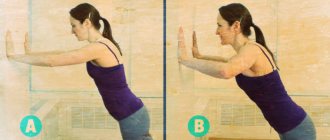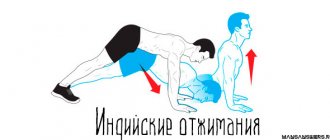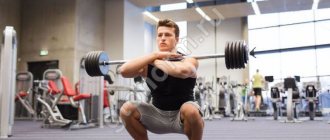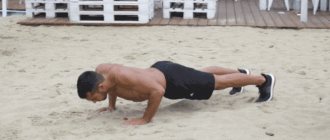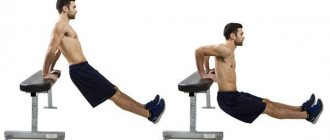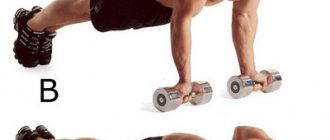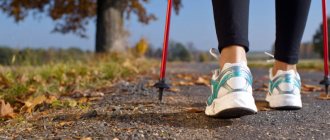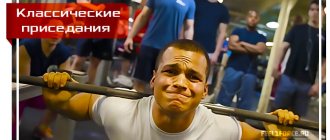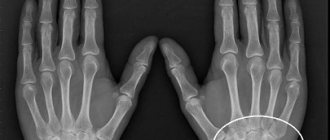Everyone knows that in addition to standard finger exercises, there are also push-ups. They allow you not only to strengthen the phalanges, but also to get rid of all kinds of diseases. Often this type of technique is demonstrated by martial arts masters who have been training in gyms for several years. Finger push-ups not only impress people around you, but also provide benefits. With regular exercise, blood circulation improves.
The benefits of push-ups. No one will doubt that such push-ups are extremely beneficial for humans. After all, a huge number of muscles are involved in the work, which are located not only on the back and torso, but also on the arms. With regular exercise, you can increase your overall tone, improve your internal condition, train your respiratory system and improve your endurance.
If you have a question, what are the benefits of such push-ups, then the answer is very simple.
All ligaments and muscles of the shoulder joint, hands and fingers develop, and overall grip improves. All this will come in handy when performing exercises that require a strong and firm grip, tenacity and endurance. Every martial artist knows how regular training helps during. From this we can conclude that finger push-ups are suitable not only for athletes, but also for ordinary people. For those who regularly sit at the computer, type a large number of texts, move little and do not play sports. With the right approach, you can forget about joint diseases forever.
Muscles involved in the process
It has already become known that a variety of muscles are involved during push-ups. They are under constant load. What is the biggest load:
- Sternum;
- Delta bundles;
- Triceps;
- Shoulder;
- Trapezoid;
- Back.
In addition to the main muscles, there are also static ones, which are not subject to much load:
- Press;
- Buttock;
- Hip;
- Quadriceps;
- Caviar.
With regular exercise, the forearm, the ligament of the hands and the fingers themselves come into play. Due to this, it is possible to obtain a positive effect, get rid of diseases and adverse effects on the body.
How to do push-ups on your fingers correctly
So we come to the most interesting thing, how to perform the exercise correctly without harm to your own health. After all, if you constantly do the wrong thing, a lot of trouble will arise. You will have to spend money on treating other diseases and sprains that arise. And no one wants to get this. In this regard, it is necessary to carefully study the technique of performing the exercise.
Of course, if you are doing everything for the first time, then you should not be upset if you fail. After all, everything comes with experience; it takes a small amount of time to improve understanding and technique. Experts note that you first need to start with five fingers. Over time, you can remove one finger at a time to increase the load and get a greater effect. Martial arts masters can only do push-ups on one finger. From the outside it looks very impressive, because it requires a lot of time, strength and training from a person.
First you need to start with the simplest. You need to take a lying position, rest on your fingers and stand like that for a certain amount of time. The phalanges and muscles need to get used to the load a little. After all, if you start the exercise right away, nothing will work, which is logical. If you can’t immediately stand on your toes, then don’t be upset. You can connect a support in the form of knees, thereby reducing the load. But you shouldn’t get used to this position, because our main goal is to learn how to do push-ups on your fingers, without using auxiliary devices.
Once you feel confident, you can start doing push-ups. You need to take a lying position, rest on your fingers and try to bend your elbows. Everything must be done slowly, without sudden movements. If during the exercise you feel an unpleasant sensation, then you need to stop and analyze the condition. After trying again, touch your chest to the floor. If still nothing works out, then you can stand on your palms and start doing push-ups. At the same time, gradually transfer the load exclusively to the fingers, lifting the back side. Thanks to such actions, you can not only get used to the load, but also get the first result. Afterwards, you should try doing push-ups exclusively on your fingers. Experts note that the first correct attempt may take several days. There is nothing wrong with this, the main thing is that you succeed. After all, if you start doing the exercise incorrectly, a lot of trouble will arise.
Technique for correctly performing push-ups on fists
Push-ups on your fists are in many ways similar to the usual type of push-ups on your palms. However, there are some nuances here.
Let's first look at the basic rules for performing the exercise.
- The placement of the hands may be different, but they must stand firmly on the same line. The fists can be parallel, with the fingers inward or outward. In the first case, the triceps work more, in the second - the pectoral muscles, and the third option for positioning the arms actively includes the biceps in the work.
- You can use special push-up supports or take dumbbells (this will make the exercise easier).
If, when placing your hands on your fists, you experience unpleasant sensations and discomfort in your hands, use dumbbells.
- We place our feet on toes approximately shoulder-width apart (but it can be narrower or wider, it is important that the position is stable).
- When going down, you need to practically touch the floor with your chest. This way the load on the muscles will be the strongest.
- We start the exercise from a lying position. Since push-ups with fists are most often practiced by athletes involved in strength or combat sports, this method is the most effective in developing strength and is close to combat conditions. However, if it is difficult to make a snatch from a prone position, you can start at the top point.
- We always rise upward by exhaling, sharply and with effort. Below we take a breath.
- During the exercise, the torso is straight and tense, the stomach is tucked, and the buttocks do not stick out upward. Watch the position of your back; there should be no arching.
Since the goal is often to build strength, speed, and endurance, it makes sense to perform high reps.
You can start with 10–20 push-ups per set. If this doesn’t work, you should choose a lightweight version from the knees. You need to perform from 3 to 5 repetitions.
In the future it depends on the task at hand. If you are involved in combat sports, then such push-ups should be one of the main exercises for you, and the number of repetitions at a time should reach up to 100.
If you are doing it for yourself, then, of course, it is not at all necessary to do 100 push-ups at a time. Can be performed 20–30 times in 3–4 approaches. But for maximum effectiveness, we recommend alternating grip and intensity.
These are the main points that are important to consider when doing push-ups. But there are a number of details related to the technique and speed of execution, the position and position of the hands.
Fist push-ups with narrow, wide and medium arms
First of all, let's look at the options with hand placement, what this affects and how to perform the exercise.
Narrow hand position
When the hands are narrower than shoulder width, and the elbows move not to the sides, but along the body, the back surface of the forearm, that is, the triceps, is more actively worked out. Fists should be placed with thumbs forward.
Video - how to do push-ups on fists with a narrow hand position
Wide hand position
If you want to focus on the chest, then you should place your hands wide, pointing your thumbs inward, as shown in the video.
Video - push-ups on fists with wide arms
Average hand position
If you perform push-ups with a medium grip, the load is distributed approximately equally across all muscles.
You can put your fists in any of three positions and shift the emphasis to the triceps, chest or biceps.
Video - push-ups on fists with medium hands
Methods of push-ups on fists depending on intensity
One of the important points in push-ups with fists is speed. If when performing an exercise with the palms we say that it needs to be done slowly, feeling the tension in all muscles as much as possible, then in this case the principle of operation is different.
Breathing is also an important aspect. When doing push-ups with fists, we do not always rise while exhaling, but inhale at the lowest point.
Options:
Quick push-ups - several per breath. This type of fist push-up is practiced when one wants to improve the speed and power of one's punch.
Features of correct execution:
- The position of the fists can be any depending on the purpose of the exercise.
- We take a lying position.
- We inhale and at the same time forcefully push ourselves up, also quickly lower ourselves down and repeat.
- In one inhalation and exhalation you need to do at least 2 repetitions, but more is better.
The number of repetitions is from 25 per approach, less simply does not make sense. Gradually you need to reach at least 50 times. 4-5 approaches will be enough.
Slow - one breath cycle - one repetition. This option is less traumatic and should be started with. It will also safely prepare your brushes for more intense work.
Features of execution:
- We take a lying position.
- We place our hands on our fists in the required position - parallel, with our thumbs in or out.
- At the lowest point, we inhale and push ourselves up with an exhalation.
- At the top point, we linger for 1–2 seconds and return to the starting position.
- The number of repetitions depends on the level of training. If you are a beginner, you can do 10 push-ups in 3 sets. For an intermediate level, 15–25 times, 3 approaches, are suitable. For an advanced level - from 30 to 50 times, 2–4 approaches.
If you don’t set a goal to achieve any sports results, and you mostly do it for yourself, then you can stop at 20–30 repetitions. It would be enough.
With pauses at the top or bottom point . If the goal is not only to increase reaction speed and punching power, but also endurance, which is no less important in combat sports, it makes sense to try push-ups on fists with pauses.
Features of execution:
- We start the exercise from a lying position.
- We place our arms and legs in a comfortable position.
- We inhale, as we exhale we rise up and linger at the top point for 10 seconds. Subsequently, this number can be increased.
- The muscles should also be tense during the delay; the back or abs should not be relaxed.
- We return again to the starting position almost until it touches the floor and also hold for 10 seconds.
- It is important not to hold your breath during the pause. You need to breathe evenly and calmly.
The desired number of repetitions for beginners at a time is from 5 (with longer pauses) to 15 (with short pauses - 4-6 seconds).
In this variation of the exercise, it makes sense not to increase the number of repetitions, but first to increase the pause time. If it’s very difficult, start with 5 seconds and work your way up to 20–30. After this, you can increase the number of push-ups themselves.
For greater efficiency and faster progress, we recommend alternating the intensity of push-ups in one approach.
How? For example, perform 10 push-ups at an average pace, 10 as fast as possible, and 5 more push-ups with short pauses. Alternatively, you can try a timer. For example, we do push-ups for 1 minute. 20 seconds - at a calm pace, 20 - at a fast pace and the last 20 we do 1 push-up with 10 second pauses at the top and bottom points.
Push-ups with alternating fists and fingers
Explosive push-ups help improve punching power and strengthen your hands, but we don't recommend starting with this exercise unless you've mastered the classic slow version of the fist push-up.
This method helps to complicate the exercise for those who have already mastered other techniques and are looking for a way to diversify their training and prevent the muscles from adapting to the load.
Execution technique
- Hand placement is average. Fists can be directed in any direction.
- Feet approximately shoulder width apart.
- We start the exercise at the top point. We lower ourselves down with our fists, take a breath and sharply push ourselves up.
- The impulse should be strong enough so that you can lift your hands off the support and reach your fingers.
- We do the next push-up on our fingers. As you inhale, we push ourselves up and open our hands from the floor. We go to fists again.
This type of push-up must be performed vigorously and quickly.
What are the benefits of this fist push-up technique?
- First of all, it is excellent for grip training, which is useful in some martial arts.
- Strength increases.
- The muscles receive more tension and become stronger.
- Alternating the load helps strengthen the joints and tendons of the hands.
Push-ups with fists and leg raises
One great variation of the fist push-up is the Thai push-up or kick-back push-up. In this option, the load is very strongly shifted to the upper part of the body, namely to the deltas.
In addition, this type of push-up requires improved balance and coordination.
Execution technique
- We take a lying position, placing our hands in fists on the floor approximately shoulder-width apart.
- We also place our feet shoulder-width apart.
- At the lowest point we inhale and exhale as we rise up.
- We lower ourselves down and throw our left leg up.
- We inhale, rise again as we exhale and place our foot on the support.
- We lower ourselves down and throw back our right leg.
- So we alternately raise the left and right legs on each push-up.
In this case, you need to strive to do push-ups at a fast, energetic rhythm.
Ultimate technique
With regular practice you should end up with something like this:
- You need to take a lying position and rest on your fingers. In this case, the arms should be straight, without bending;
- Next, exhale and bend the elbow joint, touching the floor surface with your chest;
- Inhale air and reverse the movement so that your arms become straight.
In essence, this is the entire finger push-up technique. At first glance it may seem very simple, but this is not entirely true. It will be quite difficult to do without special training.
Contraindications and precautions
Although the exercise is very difficult, it has quite a few contraindications. Essentially, they are the same as in the case of regular push-ups. Thus, exercise is prohibited for injuries in the shoulder, elbow, or wrist joint.
Hold off on one-arm push-ups until you feel any pain or discomfort in your muscles or joints. Otherwise, the benefits of the exercise may be negated, but there can be quite a lot of harm.
In addition, your physical fitness plays a role. If you are new to the sport, you should not start with one-arm push-ups. First, it is recommended to master classic push-ups, and then gradually approach your goal - how to learn to do push-ups on one arm. To ensure that the exercise brings you only benefit, consider the following recommendations :
- You should not experiment with transferring the load to one hand until you can, with the correct technique and easily, do at least 30 regular push-ups on both hands. You need strong shoulders and triceps to perform this exercise, especially if you are fairly heavy.
- To gain the necessary core strength, you can do push-ups on your elbows, while trying to use the one-arm push-up technique.
- If you get tired with only a few reps left in your set, be patient and push through to the end. Pushing yourself in this way is the best way to train your muscles, and in the future they will thank you for it.
- It's normal to be tired, but if you feel like you can't continue at all, stop. If your arm cannot support the load placed on it, you may fall and hit your face on the floor.
If you suddenly feel a sharp, severe pain, you should also stop. And if the pain does not stop, it is important to consult a specialist, as there are risks of injury.
Who is contraindicated for
This exercise should not be performed by those who suffer from chronic diseases of the shoulder girdle, elbow and wrist, or who have serious injuries received at work or at home. Experts note that push-ups should not be performed by people with constantly high blood pressure. This may adversely affect your overall health. It is also worth paying attention to overweight people. After all, extra pounds can increase the load several times and harm the phalanges.
Conclusion. Finger push-ups help prevent diseases of the joints, fingers and hands.
With regular exercise, it is possible to increase the tone of the body.
We will devote this article to push-ups. Namely, finger push-ups. How to do push-ups correctly? What is their benefit? How can they help us in self-defense? We will try to answer all these questions.
What, exactly, are push-ups useful for? Push-ups help develop and strengthen the muscles of the chest, abs, back, neck and maintain good physical shape, as well as overall health. And finger push-ups strengthen the fingers, hands, forearms, and corresponding joints and ligaments. During push-ups, many muscle groups work. When you lower yourself, touching the floor with your chest, you stretch the muscles of the chest, triceps, muscles of the inner surface, forearms, sternocleidomastoid muscle. Also, the gluteal muscles, hamstrings, quadriceps, and calf muscles work statically while you keep your body straight. When lifting, the pectoral muscles contract, the triceps contract, and the inner part of the latissimus muscles contract. Many muscles stretch, and many work statically. Push-ups are an exercise that involves all the muscles of your body, but most of all the load goes on the pectoral muscles, triceps, deltoids, and forearms. Due to the fact that push-ups are done on the fingers, the hands and ligaments of the fingers also work. Push-ups are a very useful exercise, even for those who have arthritis or bursitis of the joints, as it helps remove excess salts from the joints and helps strengthen the pectoral, back, and deltoid muscles. Another important advantage of push-ups is the fight against stoop, osteochondrosis, and curvature of the spine.
Keep in mind that you should only exercise when your health is normal. You should not exercise when you are sick, as you may prolong your illness.
What time should I choose for training? It depends on your free time. If you work on a computer at home, then you need to do push-ups throughout the day. Breaks between push-ups can be 20-30 minutes. It would be enough. You can train in the evening from 3 to 8 times a week. It all depends on the availability of free time. Do 10-15 sets of 20-30 push-ups.
If you cannot accurately determine your training schedule, then it is advisable to use every opportunity and do push-ups. Such training can be called intuitive. You should feel when you have free time and whether your body has time to recover. Try not to overwork yourself. You need to listen and trust your own body. Don't be upset if you don't succeed at first. Professionals spend years on this. Therefore, you need patience and you will succeed.
If you are too busy and don’t have enough time, then you can train 2 times a week, on weekends. You will need two to three hours. Do 20-30 sets of 15-20 push-ups. You can increase the number of push-ups, but don't overdo it because you have another day of training ahead. If you feel muscle pain tomorrow, don’t be afraid, you just need to go to training - after the warm-up the pain will go away. Try to do your best on the last day of training, as you will have a whole week to recover. Post-workout pain and swelling is a good thing. After all, this means that your muscles have begun to strengthen. In addition, after several weeks of training, you will feel that your body has begun to recover faster and you no longer receive the same load as before, you want to exercise even more, not only on weekends. You can start exercising not only on the weekend, but remember that two days before training on the weekend, you should rest and gain strength, even if it seems to you that you have a lot of strength, but fatigue creeps in unnoticed. The thing is that our body can restore strength and energy reserves for one day to survive it, but without completely recovering. In simple terms, all muscles cannot get tired at once. For example, when doing push-ups today, you work a certain layer of muscles, when it is depleted, others will come to replace it. And this layer of muscles will rest and renew itself. So remember that even rest will make you stronger, and training is like a whip that starts the process. If you hit often, you will drive the horse.
How to do push-ups correctly?
It is important to do the same number of push-ups. The work is aimed at strength endurance, so it is better to do, for example, 30 times, but less in the number of approaches. In case you are doing push-ups with weights to increase your strength, then you can do sets with a decreasing number of push-ups.
Proper technique is also extremely important.
Be honest while training, no need to deceive yourself. If you do push-ups incorrectly (for example, you do not fully extend your arms or do not touch the floor with your chest), then you will not get the desired effect from the training, since you will not be working all muscle groups. More experienced athletes use “wrong technique” in order to use other muscle groups. In this case, it is possible to use push-ups with clapping. But first, of course, learn how to do push-ups correctly.
Over time, it will be easier for you to complete the previously established threshold of approaches and number of push-ups, and therefore easier to bear the load. Therefore, you need to increase the number of push-ups, approaches, and also use additional weights. You can include new types of push-ups. For example, before you had a hard time doing 12 sets of push-ups on all fingers 15 times, but at the moment you don’t feel any strain from it. You can try push-ups on 3 or 4 fingers. Gradually increasing the load.
When you start doing push-ups on your fingers, some difficulties may interfere with you, but they will go away when your fingers and joints become stronger. First you need to learn how to do push-ups on all fingers. If your fingers begin to bend inward during push-ups, don't worry, everything is normal. They will not be able to break, as it usually seems, because according to the laws of physics, it is curved objects that can hold a greater load than straight ones. Gradually, as your training develops, you will be able to straighten your fingers. Over time and with constant training, you can learn to do push-ups on four, three, two, and maybe even one finger.
So, when you start doing push-ups, your fingers should be positioned like a spider's legs. If you can’t do a push-up, then try again and again, if you still can’t do it, then it’s better to do it tomorrow. After about a week, you will definitely be able to do one push-up on your fingers.
You can do additional exercises to strengthen your fingers. For example, do push-ups with your palms slightly raised.
When, after doing push-ups, you feel that your fingers are starting to go numb, you need to restore blood circulation. To do this, wait a while. But if there is no time, because you need to do one more approach, then you need to stand on your fists and do push-ups in this way. You can also include push-ups on your fists in your training, as they strengthen your hands.
Reading this article, the question arises - why all this?
This is necessary in order to make your fingers and hands stronger, to have a good and strong grip, like professionals, to be able to repel ill-wishers just by squeezing your hand. And strong hands and fingers allow you to perform various grips and choking techniques. You can remain a winner without even landing a single blow.
Trained fingers can do a good job when you approach your opponent and apply a painful hold to the neck, while planting him on the ground. Severe pain will make him forget about the attack. As a result, you solve problems without fighting, which is important now.
In addition, push-ups on your fingers will also help you in everyday situations. For example, if you work on a computer, your trained fingers can type faster and get less tired. And if you do boxing, then push-ups on your fingers will reduce the risk of injuries with “knocking out” your fingers.
Constant finger push-ups improve health, including helping to avoid arthrosis of the joints and cure bursitis, because these exercises cause blood flow to the hands, that is, by receiving additional nutrients, the joints begin to strengthen and rejuvenate.
Another important advantage of push-ups is, of course, a good mood. After all, you will become more confident in yourself.
We hope that after reading this article you will be able to fall in love with push-ups, improve and strengthen your health, and have high achievements in sports.
The healing properties of oxygen cocktails have been known since ancient times; in the modern world they are actively used in medicine. For example, oxygen cocktails are used to stimulate the immune system and increase the body’s defenses. To prepare such cocktails you need to purchase
It consists, firstly, in strengthening the joints and, secondly, in increasing the explosive strength of the arm muscles. There is no need to explain why it is necessary to strengthen the joints: even when practicing air strikes, unprepared elbows can be damaged; When working on paws and bags, fingers and wrists easily “fly out”. For people who are too early to “throw” the barbell from the rack, push-ups are the most suitable exercise.
What muscles work?
To understand the mechanism of correct execution of the exercise, you should first understand which muscles work when doing push-ups on one arm? In general, the same muscle groups that are involved in regular push-ups are included in the work:
- pectoralis major muscles;
- triceps;
- deltoid muscles;
- biceps;
- rectus and oblique abdominal muscles;
- serratus anterior muscles;
- gluteus maximus muscles;
- hamstrings;
- quadriceps;
- calf muscles;
- latissimus dorsi muscles.
The difference between the options is the accentuated load on certain muscle groups. In the “one-handed” version, the calves, hamstrings and quadriceps play a less important role. At the same time, the load on the lats increases significantly. Since one of the key points of support is lost, the body requires stabilizers to balance. In this context, the latissimus belongs specifically to the stabilizing muscles.
The role of certain muscles increases or decreases depending on the position of the body, arms, pelvis and legs. The closer the execution technique is to ideal, the greater the load on the triceps, deltoids, abs and stabilizers. The ideal technique is the one that requires the most effort. More about this in the appropriate section.
Why do you need push-ups on your fingers and fists?
To strengthen the joints that are usually hit, do push-ups
it is necessary
with fists
- we usually hit with them.
The next stage is push-ups on the fingers
: five, four, three, two, one (large - for complete maniacs).
If in a normal position you cannot lean on your fingers, then you can do push-ups from your knees
. This sharply reduces efficiency, but Moscow was not built right away. Strong fingers not only allow you to avoid injuring your hands, but also provide a tenacious grip in a fight.
Sometimes you hear the opinion that during push-ups on your fists, the joint fluid is squeezed out of the bags, the joint “ dries out”
“, and if after such a warm-up you start working intensively with your fingers, then in ten to fifteen years it will come back to haunt you with sore bones. However, I have never heard of people who have visibly suffered from intense long-term push-ups. In addition, it is purely physiologically difficult to imagine where this liquid actually flows out.
Complicated push-ups
Let's look at more complicated options:
Increase your power threshold
To do this, start using weights in the form of a sports vest or discs (ask your teammates or trainer to place weights on your back during your push-ups).
As practice shows, when you learn to do push-ups with weights 50 times, then regular push-ups of a hundred repetitions will not be difficult.
Remove the sketch reflex
When performing an exercise, the muscles, in response to a strong stretch, reflexively tend to contract, and vice versa. This is called the sketch reflex.
We will lose it if, when performing push-ups at the bottom point, we completely lie with our chests on the floor and lift our palms off the floor.
This type of push-up is much more difficult to do, since the mechanism of muscle work and amplitude increase.
Engage your leg
In push-ups, you can very well work out the muscles of the legs, abs and increase the load on the delta of the arms - for this you should try the Dutch push-up (it is also called the “grasshopper”).
The exercise is performed as follows: pause at the bottom of the push-up, lift one leg a couple of centimeters from the floor and move it to the side (do not bend).
Bring your leg back over the side, place it on the floor, and straighten your arms. In addition, mobility of the hip joints develops.
Do push-ups with only one arm
When performing the exercise, it is allowed to move one supporting leg to the side (otherwise it will not be possible to maintain balance).
One-arm push-ups are good for building up the muscles in the shoulder girdle.
Try the American Corkscrew
A rather complex exercise, performed as follows: starting position lying down, arms slightly wider than shoulders, feet moved forward towards the head (so that the legs are slightly bent at the knees and the pelvis is raised towards the ceiling).
As you exhale, lower your pelvis to the side (you need to touch the floor with only one side, do not fall over), while simultaneously bending your elbows. Return to the starting position.
Do push-ups with your fists
It is done in the same way as the basic exercise, only the emphasis is not on the hands, but on the knuckles.
You should try to distribute the weight on the knuckles of the index and middle fingers, as they are the strongest.
This type of push-up is useful for those who practice martial arts (a more complicated version is push-ups on the fingers, but it is very traumatic and requires lengthy preparation).
Do the Japanese uchi-machi push-up
Used for training judokas and very well strengthens the spinal extensors, buttocks and the entire core.
It is performed as follows: in the starting position, lift one leg off the floor and extend it parallel to the floor.
Lower yourself down on your hands, pause, lift your leg as high as possible, rise up on your hands and return your leg to the starting position (do not touch the floor with your leg throughout the entire approach).
Do push-ups with accents (this type of push-up is called “English” or “different push-ups”)
In the starting position, place one arm a little higher (the shoulders are not in a straight line, but on a diagonal line), and raise the opposite leg above the floor.
Do not fall over when lowering and lifting. This push-up allows you to load the rectus abdominis muscle and hip flexors.
Try the Russian push-up
The difference from the classic push-up is that it is performed with your hands resting on the weights lying in front of you.
When bending your arms, you should try to go as low as possible.
Unstable support allows you to add load to the shoulders and forearms, increase the rotation of the humerus, and work out the hand grip well (it affects the force of the blow).
Work your back with the diving push-up
The starting stance is supported on the hands and feet with the pelvis raised and the head lowered (in yoga this pose is called “downward dog”).
Bend your arms and at the same time make a wave-like movement with your body - as if you are crawling through a gap under a low gate.
Smoothly lower your pelvis and legs to the floor, arching your back and raising your head. Repeat the movement in reverse order.
This exercise is very beneficial for the spine.
Finally, we draw your attention once again: despite the simplicity of the push-up program, it can cause harm if you do the exercises incorrectly. Train carefully, do not load your muscles right away, increase the level of difficulty gradually, watch your breathing
Train carefully, do not load your muscles right away, increase the level of difficulty gradually, watch your breathing.
Do push-ups regularly, don't skip classes.
This is the only way you can achieve high results and pump up the muscles of your arms, chest, and core using push-ups.
Good luck in sports!
Hand placement during push-ups
Regarding the placement of hands during the exercise, one can think in two ways.
On the one side
,
the fist for push-ups must be placed in the position from which you hit
.
On the other hand
,
you need to punch with your fist in the position in which you do push-ups
.
In other words, you need to personally find the optimal position of your hand and work like that. There are a variety of stances (wide grip, clasped hands, elbows out, etc.) that are useful for working different muscle groups. It’s beautiful, it’s useful and allows you to build a harmonious body, but if the task is “hit hard, hit fast, hit often,” then you need to position your hands in a way that’s comfortable.
Since the trajectory of the hand during push-ups with the elbows pressed to the body is very similar to a gyaku-tsuki
(direct blow with the back hand), then the opinion was expressed (though it is no longer known by whom) that
intense push-ups are the secret of strong blows.
To some extent, this is true, but still, to practice punches, it is more advisable to hit these same blows.
And push-ups
are, whatever one may say, general physical training.
During such exercises, almost all muscle groups work. Plus an interesting medical fact
- the hands have the largest projection area on the cerebral cortex. In other words, by working with your hands, you are actively stimulating your brain. And this is important; brains are not the least important thing in Martial Arts.
Types of push-ups
1. Wide push-ups. By doing this exercise, you develop your pectoral muscles and shoulders well.
When performing exercises, you should pay attention to ensuring that your hands are at a distance twice as wide as your shoulder. During the exercise, your elbows should be directed to the sides. And when doing push-ups, your chest should be in contact with the floor.
It is not unimportant that you need to keep your body straight and watch your butt. So the butt should not rise up, and the body should not sag. After all, the correct technique for push-ups is the key to 50% success.
Push-ups with wide arms
2. Considered the most common among young people, the exercise develops the middle chest area. To do this, you take a lying position, your arms are straight, and your hands are placed slightly wider than your shoulders. As you lower, point your elbows back, moving parallel to your body. When performing the exercise, your chest should reach the floor.
3. Narrow push-ups. You need to move on to such push-ups gradually, because during push-ups, the maximum load falls on both the triceps and the anterior deltoid muscle. And so, lying down begins with your hands together, so that your index fingers and thumbs touch.
Narrow push-ups
4. This is a very difficult exercise and requires fairly good physical preparation. So you ask: How to learn to do push-ups on one arm?
To do this, you must do good push-ups using at least three methods, and also practice parallel exercises on parallel bars and horizontal bars.
You can learn to do push-ups on one arm using this technique:
Take an emphasis while lying off the floor. At the same time, the body should be straightened, and the right hand should hold the entire body at this time. Next, you need to find balance so that the body does not wobble. If you cannot maintain balance, then to maintain balance, move your other leg to the side, with your 2nd hand behind your back. The gaze is directed to the floor. Slowly lower yourself 15-20 centimeters and fix the body at this point, after which we return to the original position.
Note: If it becomes difficult to maintain balance, then the 2nd hand can be held on the hip, and not behind the back as in the first case.
Finally, the correct push-up technique will help you always have not only a beautiful, toned body, but also good health!
View the discussion thread.
blog comments powered by DISQUS
Slow push-ups
Slow exercise builds endurance
, which is primarily needed in the fight.
You must do push-ups slowly, continuously, smoothly flowing from the top to the bottom. A fast pace of execution trains “explosive” strength, impact power. To practice it, you can do push-ups with or without pauses. That is, he sank, froze, and rose sharply. This is how you develop a non-amplitude throwing of the hand, a strike without a swing
. Whether or not to pause at the bottom point is your personal choice (well, or the choice of a trainer who gives the count of push-ups as he sees fit and can “encourage” those who are too slow).
Explosive push-ups
At one time I loved “explosive” push-ups
, that he came up with his own exercise: down on your fists, pause, then sharply up - so as to break away from the surface and come out leaning on your fingers. Then, on my fingers, down and up again, at the moment my hand lifts off the floor, my fist clenches again, and I land on my knuckles. And as many times as possible - either a fist or fingers. Great push up. The grip became such that, although he didn’t bend the coins, he left decent bruises on the guys’ wrists.
Types of exercise
In addition to the classic ones, there are push-ups on fists, five fingers, three and even one. But in order to avoid injury, it is better to start with the usual option - on open palms. Only when it has been perfectly mastered can you begin to master others. Athletes who train with their own weight have about two dozen types of push-ups. Here are just a few of them:
- from the floor;
- with wide or narrow hand placement;
- at the tips of the fingers;
- explosive (with claps);
- with support on different objects (bench, medicine ball, platform);
- uneven height;
- on uneven bars;
- with leg lifts, etc.
You can improve your technique in this exercise over the years. Of great interest among amateurs is the option in which the support is placed not on the palm, but on the knuckles. These push-ups have both advantages and disadvantages:
- The hands are strengthened.
- The position of the fist is stabilized, its striking surface is trained.
- Sensitivity decreases.
- The range of motion increases, which helps to better work the muscles involved.
- Balance training.
This option is not recommended for those with joint problems. Contraindications also include excess weight, spinal diseases, poor coordination, and injuries in the shoulder area . This type of exercise does not cause harm to healthy people .
But even at first they should not do push-ups on the floor: it is recommended to lay down a mat, otherwise it will be very painful.
Push-ups are a workout for the spirit.
Push-ups, among other things, are excellent training for the spirit. You don’t even have to do push-ups, but just stand on your fists all the way. Andrey Kochergin loves to use this trick at his seminars.
, founder of Koi-no-takinobori-ryu karate: whoever stands longer is the man. Other, not very physically prepared people show simply miracles of endurance, although they then fall almost unconscious.
You can do push-ups any way you like. There are no laws, there are only principles - push off from the ground as many times as possible, maintaining as level a body position as possible. For those who want to diversify this exercise, I offer several interesting methods outlined by the former coach of the Ukrainian Kyokushin karate team Vitaly Kushnirik
. They are good when there is no additional sports equipment at hand, and you have to improvise:
And another important fact - after intense push-ups, it is useful to get the blood flowing by working on bags or simply doing a little “shadow boxing”.
One type of push-ups is. Whether you want to improve your abs, pump up your shoulder girdle, or simply learn how to defeat your opponent without beating yourself up, you need to learn this exercise. For people who are not involved in sports, but work at the computer for a long time or write a lot, it is useful to have trained hands: they get tired much less, work faster and do not go numb. There are hundreds of reasons to do push-ups!
Did you know that Bruce Lee was the man who did perfect push-ups on two fingers on one hand?
One-arm push-ups: technique
One-arm push-ups can be performed using different techniques. Various sources present different variations of the exercise. Some of them are more complex and effective, others are simpler and more suitable for beginners.
First, we will consider the most complex, standard technique of push-ups on one arm, and then we will present simpler, prepared options.
In the standard version, the position of the body during the movement will be almost the same as with classic push-ups. Only you will need to lean not on two palms, but on one, which will be placed under the body. In other words, your body will be in a completely straight line, your shoulders will be parallel to the floor, and your feet will be shoulder-width apart. This is a technique that you need to strive for, but it is unlikely that anyone will be able to do push-ups like this right away, even with impressive physical strength. The reason for this is that balance and the ability to coordinate the work of many muscles to perform the exercise will not be enough.
Here's how to ideally do push-ups on one arm:
- Take the starting position, namely, lying on one hand. The other hand is placed behind the back, the hand is placed on the buttock or slightly lower. The body should be straight, legs should be on their toes. Let your feet stand shoulder width apart or slightly wider.
- Inhaling, bend your working arm at the elbow and lower your chest almost to the floor. At the same time, pay attention so that the lower back does not bend.
- Exhaling, push yourself to the starting position .
Pay attention to techniques that will help make the exercise easier:
- If you spread your legs wider, it will be easier to maintain balance, and then you will be able to move your working arm further from the midline of the body. As a result, a lot of the load will be transferred from the triceps to the chest muscles.
- Balancing will become easier if you move your pelvis toward your working arm and lift your opposite shoulder.
The techniques listed above should be used only at the beginning of training, when you are just mastering the technique. Otherwise, you may get used to this lightweight option and will not progress in the future.
How useful are these exercises?
There are no downsides to any push-ups. They only have advantages. The benefits of finger push-ups are obvious.
- Combat athletes need to strengthen their forearms and develop finger strength. These exercises will strengthen your joints and develop grip strength.
- During this type of push-ups, the muscles of the chest, forearms, triceps, anterior deltoids are involved, and the buttocks, thighs, and leg muscles are also worked and strengthened. As a result, you can fight stoop and straighten your spine.
- Exercise helps remove salts, which means the condition of joints affected by bursitis or arthritis improves; finger push-ups will be a good prevention of these diseases.
- If the body is polluted, metabolism is slowed or immunity is reduced, as a result of these exercises strength and vigor will return.
How to learn to do push-ups on your fingers
Before the muscles and ligaments become stronger, difficulties are inevitable. With your arms straight on the floor, leaning on your fingers, try to bend your elbows and go back. It's okay if you notice your fingers bending inward - you won't damage them. To begin with, you can use your knees as a second support point. It is necessary to place your fingers in the form of spider legs. Try several times. If you feel pain, put it off until tomorrow. After seven days of continuous attempts, you will definitely be able to do one push-up correctly.
The most important thing is to do the exercises correctly, don’t mess around. Can't you fully reach the floor or don't fully extend your arms? Do not expect full return and benefits from the classes.
For optimal load, train every day, performing twenty to thirty repetitions for every ten sets, and in six months you will surprise your friends with an “iron man” grip.
How to do hand push-ups on the floor correctly for girls and guys, what is it for? Nowadays, many people do various exercises to change their figure and develop strength. Some constantly go to the gym, fitness center, others lift dumbbells, weights, and much more. It’s easy to increase your muscles at home, and without exercise equipment. The most effective exercise for developing many muscle groups is push-ups from any support while lying down.
Pushups. Types of push-ups
- Author admin
- February 9, 2013
Work - home - work - home - work... this is approximately the daily routine of the average man. To our deepest regret, not every person in modern living conditions can afford such a seemingly trifle as maintaining their physical shape in proper condition, much less making their body attractive, sculpted and strong. Irregular and stressful working hours, lack of free time for training, lack of a nearby gym - these are just the most basic reasons that do not allow you to fully exercise your body. If you fall into this category of people, there is no need to be upset, there is a way out!
Muscle training at home
Iron and a trainer are of course good, but do not forget about the basic and well-known squats, jogging, abdominal training and push-ups - this, as they say, is the basis of the basics; basis for further development. In terms of efficiency and versatility, push-ups have no equal in this regard - here you have strength, relief, and endurance.
The term “push-ups” means a general developmental physical exercise to strengthen the muscles of the chest and shoulder girdle. Everything is correct, it’s just worth adding that basic push-ups can, in addition, develop strong and sculpted muscles not only of the chest and shoulders, but also the abs, back muscles, forearm and triceps. In order to highlight the work of a certain muscle group, emphasis is placed on methods of push-ups, of which there are many today.
Types of push-ups
Now, as for the types of push-ups used to work out one or another muscle group. There are:
- Regular push-ups. The load is distributed mainly between the chest and triceps.
- Push-ups with a wide or narrow grip. The load is shifted towards the chest (wide grip), or to the triceps (in the case of a narrow grip).
— With a tilt forward or backward (leaning on a hill, respectively, with your legs or arms). The tilt of the body allows you to shift the load to the upper or lower part of the chest.
- On one hand. Works mainly the triceps.
- With full or partial amplitude. The use of so-called boosters and partial amplitudes allows you to load the target muscles as much as possible in order to achieve the full benefit of the training.
- With or without additional load. Everything is clear here: no progress in weights - no growth in muscle mass.
Please note that exclusively in all types of push-ups there is a fairly serious load on the deltoids, abs and back. Thus, this exercise is almost universal
And for the upper shoulder girdle - without exaggeration, it is irreplaceable.
The technique of performing push-ups from the floor is simply simple: it is enough to keep the torso level and control the process of lowering/raising (eccentric and concentric phase), and at the lowest point (when lowering) the torso should be parallel to the floor, if we take the classical technique of execution as a basis, and remain in in this position for about a second or two. During the exercise, you need to feel the work of the target muscles to the maximum, which in itself is a sign of the correctness of the actions. It should be understood that in push-ups, as well as in any other exercises, it is the technique of execution that comes first, and not the number of repetitions. The quantitative criterion is also, of course, of considerable importance, but everything should happen gradually - from quality to quantity, but not vice versa. For maximum complex effect for all possible muscle groups, the classical technique is recommended.
In order to do a lot of push-ups without losing the quality component, you need to remember and adhere to the following rules:
- first of all, to do a lot of push-ups you need... push-ups. It is consistency and perseverance in training that gives strength;
— don’t forget about rest between workouts and proper nutrition during recovery days;
— if possible, the muscle groups involved in push-ups should be given additional load; pull-ups or, for example, dumbbell lifts are suitable;
- you don’t need to be too zealous with the number of repetitions - it’s better to do 5 sets of 20 quality repetitions than 2 sets of 50, but whatever;
– don’t forget to use weights – this will add strength and endurance.
As one great man said: those who want look for opportunities, those who don’t want look for reasons! Thus, just 20-30 minutes of home workouts a day will allow you to become significantly stronger, more resilient and more attractive than ever before. The decision is yours!
Want to know more?
Kinds
Push-ups can be done in different ways, there are types such as... First, let's look at the position of the arm and hand. The best thing is to do push-ups on your fists, what is the benefit of this method. In this position, the muscles of the fingers and palms develop, the skin on the joints and phalanges hardens, and the fist receives a comfortable position.
On the edges of the palms
A difficult type of push-up is done on the edges of the palms. Of course, at first it will hurt to do push-ups, you need training, but then it will become easier. This push-up will help significantly strengthen the muscles on the metacarpal bones, and it will become firm and less sensitive to shock, which is necessary in extreme situations. During a skydive, climbers or people on kayaks.
On fingers
The last type of push-up is on the fingers. This is a fairly complex exercise; see below for its technique and benefits. First, use all fingers, then remove one at a time. The main thing is that your fingers should be straight or rounded. If you can do push-ups or take a position while lying down, and at the same time, remove your thumb and do push-ups on just one finger. Then this will be the highest achievement, which not everyone can achieve. Finger push-ups are great for training a straight punch, and will give you an “iron” fist.
In addition to the arms, the pectoral muscle is also involved in the exercise. This means that the position of the hands affects which part of the muscle trains the triceps more. After all, the shoulder receives more load, and a little on the arm. The usual position of the hands is shoulder-width apart, and the elbows are placed at an angle of 45 degrees. After all, this is the best way to do push-ups; the load is evenly distributed. You can place your arms wider than your shoulders, and place your elbows in the shape of a right angle, namely, to the body. Then the deltoid and pectoralis major muscles will be involved. When you place your hands closer and your elbows are parallel to your body, then the load is placed on the triceps and pectoralis minor. To obtain different results and effects, change the inclination of the torso. If the head is higher than the legs, then the lower chest sways. If positioned lower, then the chest, its upper part and abdominal muscles work.
On one hand
You can do push-ups with only one hand, although it is difficult, it is also useful for developing your arm. If you spread your legs wider, it will be easier. The effect will be greater if a person sits on his back, or if he puts one leg on top and the other on top. You can try clapping push-ups. Reaction and dexterity develop. If you need to train your breathing, then do push-ups in between runs. After some distance, perform about 20 push-ups.
Perform the exercises correctly from the floor and you will become strong and agile.
Benefits and harms
Speaking about finger push-ups, the benefits and harms of the exercise make many people wonder if they need it.
- Well, firstly, it uses a huge number of muscles, which is good for quality training;
- Secondly, the athlete increases his endurance and improves breathing;
- Thirdly, such push-ups strengthen the fingers, make the grip tenacious, powerful and strong;
- Fourthly, finger push-ups are part of a set of preventive measures to combat arthritis and other joint diseases.
However, if you train thoughtlessly, do not follow the technique and, for example, start doing push-ups without the approval of a doctor or trainer, you can harm the body. Among the minuses, we note the following factors:
- There is a risk of injury to the target ligaments and muscles;
- The exercise has many contraindications: a chronic state of high blood pressure, excess weight, damage to the ligaments or joints of the shoulder girdle, the rehabilitation period after injuries, abdominal operations, for any inflammation (including ordinary ones caused by cold viruses).
So, we have looked at what finger push-ups provide and what the consequences of doing them incorrectly or thoughtlessly are. Go ahead.

